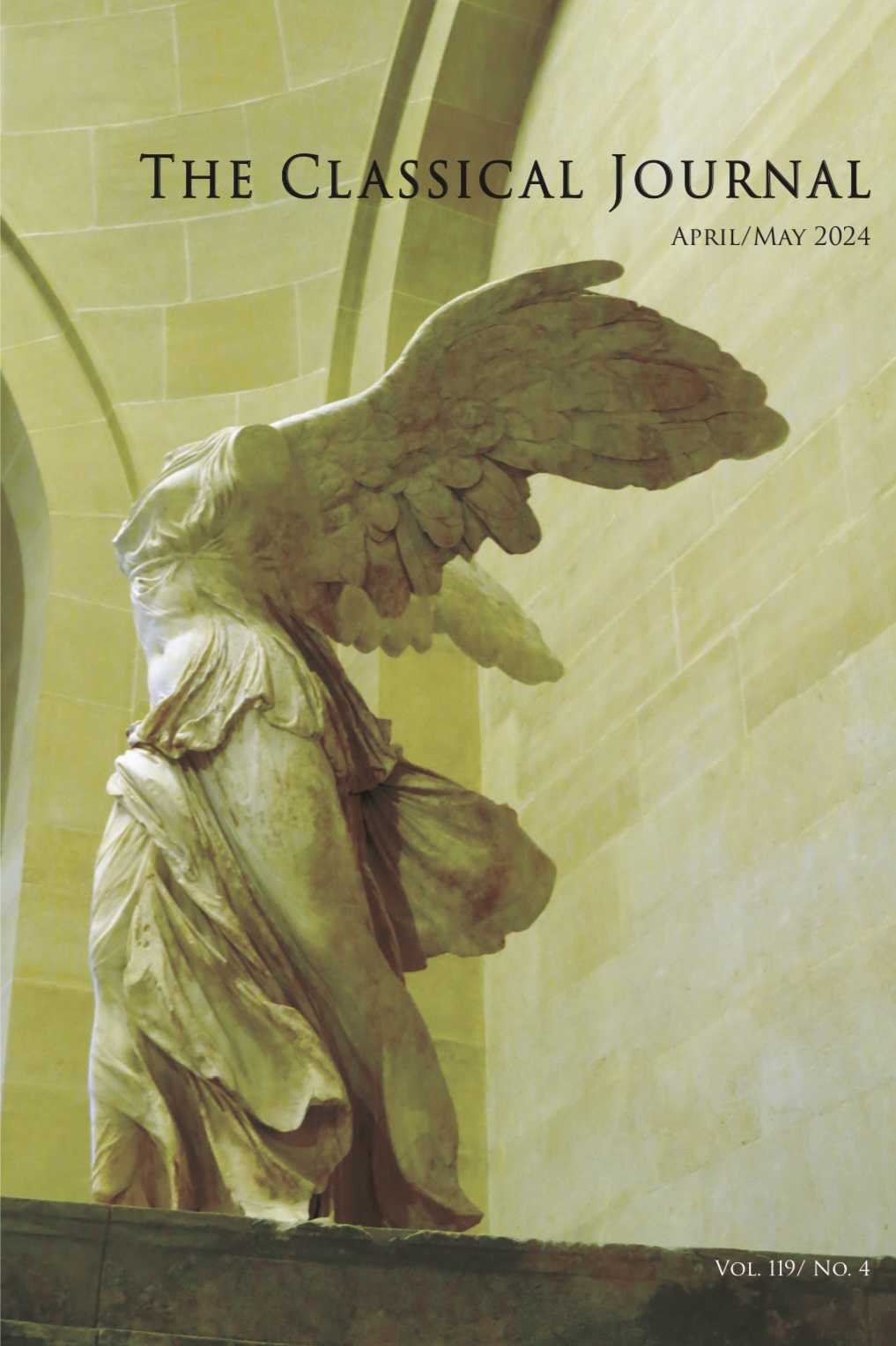The following articles are contained in CJ
113.3
Abstracts of Articles
AVENGING VIPERS: TRAGEDY AND SUCCESSION IN NICANDER’S THERIACA
This article examines Nicander’s description of the mating habits of the viper as an example of how his biological information and his literary engagement with earlier Greek poetry influence each another. Nicander claims that female vipers kill their mates during copulation, and are then in turn killed by their babies during childbirth, “avenging” their father’s death. I trace the intertexts that shape the passage from Herodotus to Aeschylus to Lycophron. Allusions to these authors allow Nicander to draw parallels between the violent reproductive cycle of vipers and literary succession of Hellenistic poets engaging with Classical authors of the past.
PLUTARCH’S RHETORIC OF PERIAUTOLOGIA: DEMOSTHENES 1–3
This paper approaches Plutarch’s prologue to the Lives of Demosthenes and Cicero (Dem. 1–3) from a novel perspective, seeking to examine Plutarch’s prefatory self-display in light of his instructions in the essay On Inoffensive Self-Praise. It argues that Plutarch’s unusual prefatory self-exposure in the Demosthenes–Cicero prologue constitutes an intriguing rhetorical device that Plutarch employs to enhance his authority as a narrator and researcher and develop and establish his readers’ complicity. It also suggests that Plutarch’s proemial self-portrait serves as a provocative reflection on significant aspects of the character of the two protagonists of the book, Demosthenes and Cicero, and their world, thus modelling Plutarch as a possible example for the reader to follow and emulate. The discussion proposes a new way in which Plutarch employs synkrisis in the Lives: it shows that Plutarch offers himself as part of the syncretic material of his biographies, as another “mirror” into which the readers gaze and thus reflect better on the character of the two men and on their own lives.
GRIEF, DISTANCE AND DEATH IN A. 12.945–52: A SPHRAGIS FOR THE BOOK OF VERGIL
A series of links to the last verses of the Eclogues and Georgics characterizes A. 12.945–52 as a covert sphragis that reflects on Vergil’s corpus. Through their description of Pallas’ baldric, focus on Aeneas’ relationship with Pallas and allusion to Eclogue 1, the epic’s final lines continue the modes of closural reflection established by Ecl. 10.70–7 and G. 4.559–66. In doing so, they mark grief as a central emotion of the Aeneid and render distance and death a point of conclusion for Vergil’s earlier works as well. This perspective emphasizes the tension between the necessity of Aeneas’ last action and the emotional toll it entails, at the same time as it calls attention to the opposition between the frailty of human bonds and the courage of those who attempt to form them in all of Vergil’s writings.


